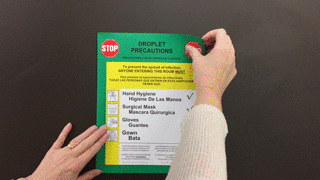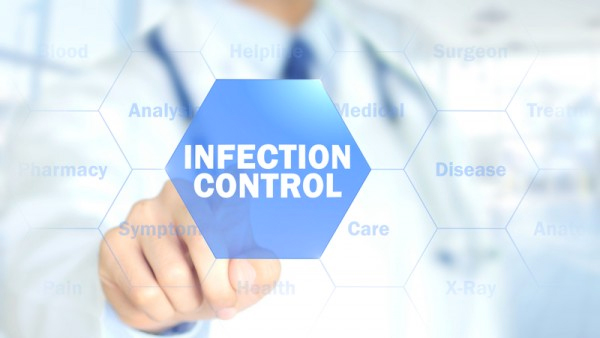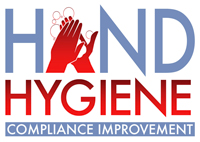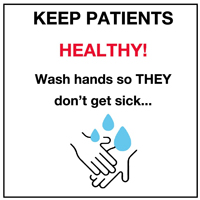If the importance of hand hygiene and other infection prevention safeguards was taken for granted in healthcare settings, COVID-19 certainly intensified their importance. Masking, personal protective equipment, avoiding aerosol generating procedures when possible, handwashing and multiple other safety measures were essential to both a healthcare worker and a patient’s safety, maybe even survival. But for all the trauma the pandemic caused, some positive behavioral changes came from it, and hand hygiene is one of those areas. In fact, a JAMA Internal Medicine research study found that hand hygiene compliance reached more than 90% in March 2020. Yet in just over a year, many healthcare workers regressed to previous habits. Overall compliance dropped back to 2019 levels “averaging 50 percent across hospitals nationwide. It’s clear that regardless of all the data that highlights its importance, effective infection prevention programs remain an elusive goal.
Effective Infection Prevention Programs
So with all the lessons learned, a few facts remain true. Hand hygiene and other infection control procedures remain the most effective infection prevention steps any healthcare organization can follow. And, the most effective infection prevention programs require efforts along multiple dimensions, including education, training, feedback and signage.
1) Hand Hygiene Education & Training
As they say in radio, your audience changes every 20 minutes. Although that’s not entirely true with healthcare workers, the turnover that occurs in any workplace is just one of the reasons ongoing reminders are essential to effective infection prevention programs.
Workload also impacts the equation. As nurses attend to a big patient load or confront unexpected challenges, the common hand washing process they normally follow may be skipped in order to provide care.
Regardless of why compliance declines, regular education and training programs serve as reminders, but maybe more importantly, promote infection prevention as an ongoing mission not a one off reminder that is quickly discounted. As for topics, there are a few key areas to cover. You likely have some team members that not only understand the importance of hand hygiene but can recite numerous statistics that convey it’s value. Yet there are others who may not understand how much it affects patient care. Although it seems basic, conveying that impact to both staff and physicians remains an essential part of any training.
In addition, it’s important to instruct the actual hand washing process. Although rubbing your hands together with soap and water for a full 15 seconds is the proper technique, very few workers actually execute it in that manner. Further, detailing the difference between hand sanitizer and soap and water and when each is appropriate to use, is another important topic.
2) Infection Prevention Feedback
Have you ever attended a training session that inspired you to take a few ideas and implement them in your workday only to fall back to old habits a few weeks later? It’s a common challenge that faces any education and training program. That’s the reason why an effective infection prevention program must include a feedback mechanism.
In fact, many studies including this most recent 2019 analysis of how feedback impacted hand hygiene efficacy found that feedback substantially improved hand hygiene compliance.
One of the challenges with this process is that it often requires observational feedback. But, hand hygiene monitoring systems are one way to supplement the data collection process and provide tangible feedback. In fact, researchers found that combining continuous hand hygiene feedback with the goals established by the facility and displaying that information throughout the facility increased the amount of hand disinfections per dispenser, per day.
3) Hand Hygiene Signage
Much like education and training, signage both reminds and instructs healthcare workers on the importance of taking hand hygiene steps and the appropriate methods to follow. Plus, the signage can also target visitors and patients to improve their compliance.
Visitors Impact On Infection Transmission
Yet how much do visitors impact healthcare associated infections (HAIs)? A recent study examined the frequency of patient contact with healthcare personnel and visitors. Not surprisingly, nurses account for the most visits with patients, but the second leading group might surprise you. It is not the medical or clinical staff, instead it’s visitors.
Plus, there are other infection prevention challenges that visitors pose. For example, their visit length is longer and they are more inclined to have contact with the patient. This contact includes touching surfaces in the room, the patient’s skin and even blood or body fluids.
Much like healthcare workers, mitigating these potential infection prevention challenges require communications from multiple dimensions. Signage is one of the most visible methods to remind and encourage effective infection prevention steps.
4) Effective Infection Prevention Signage
But, signs aren’t a set it and forget it proposition. Not just any message or a sign placed in a single spot generates the best outcomes.
In fact, Adam Grant, a psychological scientist at The Wharton School, University of Pennsylvania, found that infection prevention themes usually rely on scare tactics. A common message is a warning like, “wash your hands so you don’t get sick.”
But Grant found that this is not the most effective method.
The Illusion Of Invulnerability
When we believe we’re invulnerable, we’re prone to take unnecessary risks. In a medical setting, a healthcare professional who is frequently exposed to germs but rarely gets sick may not think they are at risk of getting sick. Therefore, they are not motivated by avoiding dangers for themselves.
5) Hand Hygiene Keeps Patients Safe
In fact, the stronger incentive is helping others. Most medical professionals work each day to protect and promote the well-being of others.
So, Grant set up an experiment to test different messages and determine their impact on compliance. You can read the study here.
It tested the impact of these two statements on posted signs,
- “Hand hygiene prevents you from catching diseases.”
- “Hand hygiene prevents patients from catching diseases.”
. . . the sign referencing patients was the winner. Keeping patients safe motivated healthcare professionals to wash their hands. In fact, it increased gel use by 33% per dispenser, and healthcare professionals were 10% more likely to wash their hands.
The sign that spoke to their personal risk didn’t resonate as strongly. Grant’s research showed that people aren’t motivated only by avoiding dangers for themselves.
6) Hand Hygiene Sign Placement

Whether it’s a high traffic area or a spot with high visibility, regardless of the message, a hand hygiene sign left in that one spot will quickly blend into the background and soon negate any benefit. Instead, changing the placement and refreshing the messages makes it more likely the medical staff will take notice. Plus, special adhesives allow you to reposition the sign without destroying it or leaving residue on the surface. A clean tac removable adhesive is one example.
United Ad Label
United Ad Label stocks a complete line of Hand Hygiene and Infection Prevention products. In addition, the Custom Label Designer allows you to easily develop custom branded messages cost effectively and with fast deliveries. Click here to learn more.


